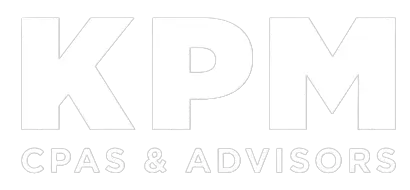For two years in a row, the IRS has deferred the enforcement of a proposed regulation that could have resulted in approximately 44 million taxpayers receiving tax documents from payment applications and online platforms like Venmo and eBay. Although this postponement is expected to alleviate potential confusion for affected taxpayers, it does not alter their tax obligations or reporting responsibilities. The IRS has communicated its intention to gradually introduce the rule starting in 2024.
Taxes Remain The Same
It’s worth repeating that the delay in the implementation of the new Form 1099-K threshold doesn’t affect taxpayers’ obligations to report income on their tax returns. All income is taxable unless excluded by law, regardless of whether a taxpayer receives a Form 1099-K. If you have questions regarding Form 1099-K reporting, please contact us.
The New Reporting Rule
The rule concerns IRS Form 1099-K, Payment Card and Third Party Network Transactions, an information return first introduced in 2012. The form is issued to report payments from:
- Credit, debit, and stored-value cards such as gift cards, and
- Payment apps or online marketplaces (also known as third-party settlement organizations).
If you receive direct payments via credit, debit, or gift card, you should receive the form from your payment processors or payment settlement entity. But for years, payment apps and online marketplaces have been required to send Form 1099-K only if the payments you receive for goods and services total more than $20,000 from more than 200 transactions (although they can choose to send you the form with lower amounts).
The form reports the gross amount of all reportable transactions for the year and by the month. The IRS also receives a copy.
The American Rescue Plan Act (ARPA), enacted in March 2021, significantly expanded the reach of Form 1099-K. The changes were designed to improve voluntary tax compliance for these types of payments. According to the IRS, tax compliance is higher when amounts are subject to information reporting.
Under ARPA, payment apps and online marketplaces must report payments of more than $600 for the sale of goods and services; the number of transactions is irrelevant. As a result, the form would be sent to many more taxpayers who use payment apps or online marketplaces to accept payments. The rule change could ensnare not only small businesses and individuals with side hustles but also “casual sellers” of used personal items like clothing, furniture, and other household items.
The change originally was scheduled to take effect for the 2022 tax year, with the forms going out in January 2023. However, in December 2022, the IRS announced its first implementation delay and released guidance stating that 2022 would be a transition period for the change.
The agency also acknowledged that the change must be managed carefully to help ensure that 1) the forms are issued only to taxpayers who should receive them, and 2) taxpayers understand what to do as a result of this reporting.
The Updated Implementation Plan
In a November 2023 report, the U.S. Government Accountability Office (GAO) stated that the IRS expects to receive about 44 million Form 1099-Ks in 2024 — an increase of around 30 million. The GAO found, however, that the “IRS does not have a plan to analyze these data to inform enforcement and outreach priorities.”
Less than a week later, the IRS announced a second delay in the rule change, explaining that the previous thresholds ($20,000 / more than 200 transactions) remain in place for 2023. The agency cited feedback from taxpayers, tax professionals and payment processors, as well as the possibility of taxpayer confusion.
It seemed likely confusion would ensue when the forms started hitting mailboxes in January 2024. For example, with forms sent by payment apps or online marketplaces, it’s not clear how taxpayers should transfer the reported amounts to their individual tax returns. The income shown on the form might be properly reported on the recipient’s:
- Schedule C, Profit or Loss from Business (Sole Proprietorship),
- Schedule E, Supplemental Income and Loss (From rental real estate, royalties, partnerships, S corporations, estates, trusts, REMICs, etc.), or
- Appropriate return for a partnership or corporation.
In addition, the gross amount of a reported payment doesn’t include any adjustments for credits, cash equivalents, discounts, fees, refunds, or other amounts — so the full amount reported might not be the taxable amount.
Moreover, not every reportable transaction is taxable. If you sell a personal item on eBay at a loss, for example, you aren’t required to pay tax on the sale. If you met the $600 threshold, though, that sale would appear on your Form 1099-K.
Be aware that the IRS isn’t abandoning the lower threshold. In its latest announcement, the agency indicated that a transitional threshold of $5,000 will apply for tax year 2024. This phased-in approach, the IRS says, will allow it to review its operational processes to better address taxpayer and stakeholder concerns.
Advice For Form 1099-K Recipients
If you receive a Form 1099-K under the existing thresholds, the IRS advises you to review the form carefully to determine whether the amounts are correct. You also should identify any related deductible expenses you may be able to claim on your return.
If the form includes personal items that you sold at a loss, the IRS says you should “zero out” the payment on your return by reporting both the payment and an offsetting adjustment on Form 1040, Schedule 1. If you sold such items at a gain, you must report the gain as taxable income.

